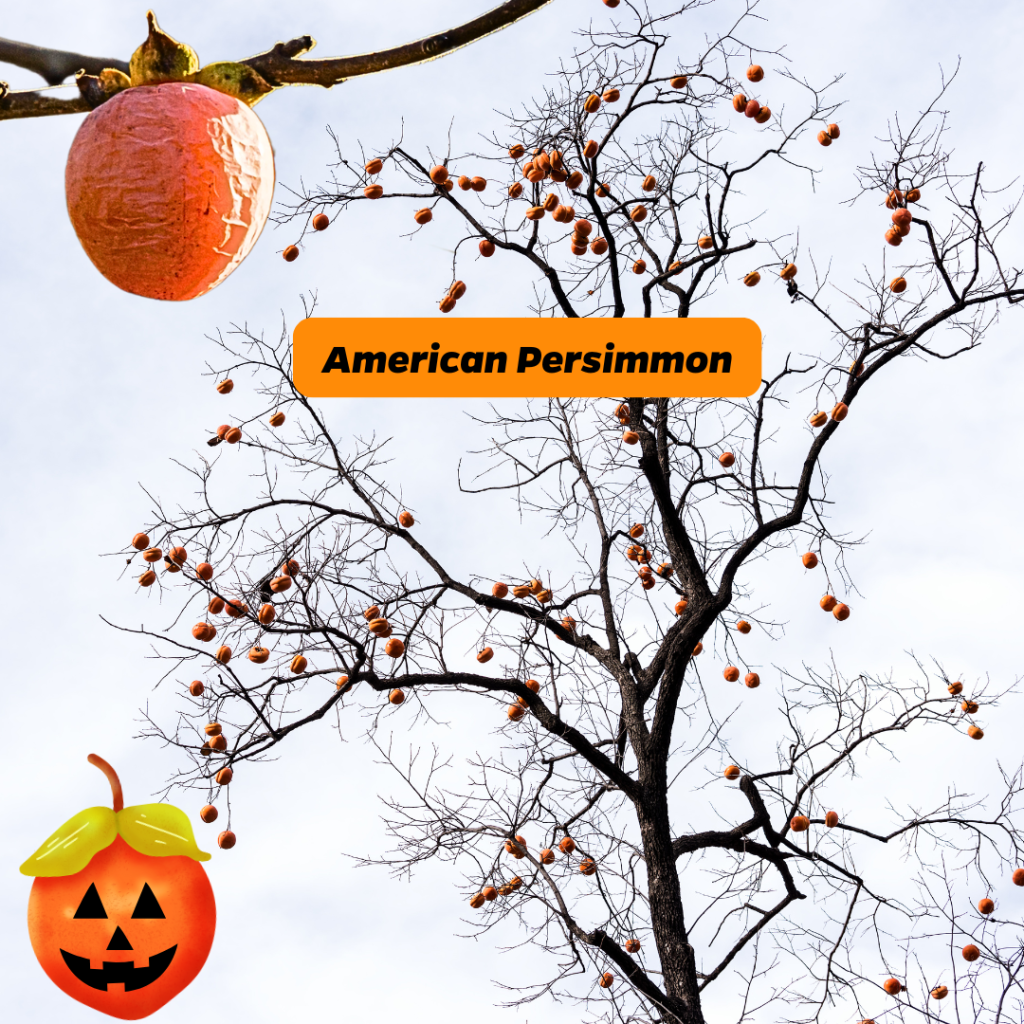At the Sarasota County UF/IFAS Extension Office, we’ve been cultivating a Food Forest to showcase the most productive, unique, and often underutilized fruits suited to our distinctive southwest Florida climate. Through this project, we aim to inspire and educate our community by offering a firsthand look at these remarkable trees and shrubs, allowing visitors to sample flavors before purchasing, and providing opportunities to gather seeds and cuttings.

October in Florida brings one of the season’s most delightful — and underrated — fruits: persimmons. Depending on the species, these fruits can bring joy for both native plant enthusiasts and fruit lovers, persimmons offer a unique range of flavors, and there’s something special for everyone, whether you’re drawn to the American persimmon (Diospyros virginiana), a Florida native, or its Florida-friendly cousin, the Asian persimmon (Diospyros kaki). With their vibrant orange, pumpkin-like fruits dotting the branches, persimmon trees bring a distinctly autumnal aesthetic to Florida landscapes that peak in October.
Asian Persimmon (Diospyros kaki): Bountiful Harvest’s
Originally from Asia, the Kaki persimmon (Diospyros kaki) has become a popular choice for Florida gardeners, known for its rich flavor, large fruit, and dependable harvests. With a cultivation history spanning over 2,000 years, a wide range of varieties has emerged, each offering unique flavors, ripening times, and other notable characteristics. Generally more compact than the American persimmon, Asian persimmons grow to a very manageable 10-20 feet, making them ideal for residential landscapes. Many varieties can also be enjoyed while still firm, giving them a satisfying apple-like crunch and a mild sweetness.
Asian persimmons come in two main categories: astringent and non-astringent. Astringent varieties, high in tannins, must ripen fully to become soft and intensely sweet, with the green calyx (top) releasing easily when they’re ready. In contrast, non-astringent varieties can be eaten while still firm, offering a mildly sweet, crisp flavor that becomes honey-like when fully ripe. This dual nature of Asian persimmons means there’s a variety to suit every palate and culinary use.
These trees are well-suited to Florida’s subtropical climate, thriving in full sun and well-drained soil. Although non-native, Asian persimmons are cherished for their high yield and flavorful fruit. At our office, we currently grow the popular non-astringent “Fuyu” and “Suruga” cultivars, and we look forward to adding astringent types, like “Saijo” or “Hachiya,” in the future to showcase the full range of flavors these trees can offer.
Read more about growing Asian persimmons: edis.ifas.ufl.edu/publication/MG242

American Persimmon (Diospyros virginiana): A Native Gem
The American persimmon (Diospyros virginiana) is a true native gem, naturally thriving in Florida’s wild landscapes. This adaptable tree is commonly found along the edges of wetlands and in disturbed sites, where it enjoys moist yet well-drained soils. Once established, it can also tolerate drier conditions. Typically, American persimmons reach 20-60 feet tall and put on a vibrant display of fall foliage in areas where leaf-spot disease is minimal. However, in Florida, they often remain closer to 20 feet in height. By October, their small, bright-orange fruits ripen, adorning the branches like clusters of jewels. At our office, we have planted one native Persimmon, but have plans to plant more to benefit our abundant local wildlife at Twin Lakes Park.
Unlike the Asian persimmon, all cultivars of the American persimmon are astringent and best enjoyed when fully ripe, developing a wrinkled look, soft texture and a deep, honey-like sweetness. One locally-known cultivar, “Turkey Lake” — originally found near the University of Florida campus — is popular for its larger and consistently flavorful fruit. This variety and others are great choices for gardeners looking to incorporate native plants that yield delicious, dependable harvests.
In addition to being drought-tolerant once established, the American persimmon is prized for its resilience and sturdy wood, which holds up well in Florida’s landscapes. For those interested in supporting local wildlife, this tree is invaluable. It attracts an array of animals, from birds to raccoons, with its prolific fruit production. It’s also an excellent host plant for native moths, including the spectacular luna moth, whose caterpillars rely on its leaves as a food source. The American persimmon brings both ecological benefits and foodscaping beauty to American gardens.
One consideration to take into account: this species is dioicous, meaning you need a male and female tree to set fruit. So, plant a few to get a reliable harvest.
Read more about growing American persimmons here: edis.ifas.ufl.edu/publication/ST231
Persimmons: Florida’s October Harvest Star
Whether you’re looking to enjoy a bountiful harvest, attract local wildlife, add a native touch, or enjoy a sweet, autumnal harvest, persimmons are the ideal October fruit in Florida. They can bring a splash of color to landscapes, provide food for wildlife, and offer a unique seasonal flavor perfect for fall recipes. Plus, their relatively low maintenance makes them a rewarding choice for gardeners of all experience levels.
This October, consider adding an American or Asian persimmon to your garden. With their distinct flavors and ornamental appeal, they’re sure to make October in Florida a little sweeter—and a lot more colorful!
- UF/IFAS: Japanese Persimmon Cultivars in Florida: edis.ifas.ufl.edu/publication/MG242
- UF/IFAS: American Persimmon in Florida’s Landscapes: edis.ifas.ufl.edu/publication/ST231
- Florida Native Plant Society on American Persimmon: fnps.org/plant/diospyros-virginiana
- “The out-of-favor native persimmon tree has a rich history in Florida” – Tallahassee Democrat: tallahassee.com/story/life/home-garden/2022/06/09/native-persimmon-tree-has-rich-history-florida-and-south/7567492001/
- “Petite, Attractive and Delicious: the [Asian] Persimmon in South Florida” – Miami Herald: fairchildgarden.org/visit/petite-attractive-and-delicious-the-persimmon-in-south-florida/
- UF/IFAS Gardening Solutions on Asian Persimmon: gardeningsolutions.ifas.ufl.edu/plants/edibles/fruits/japanese-persimmon/
- Information on “Turkey Lake” native Persimmon: floridafruitgeek.com/2019/11/28/the-turkey-lake-american-persimmon-free-fruits-scionwood-are-available-in-gainesville/
During the preparation of this work, the author used ChatGPT to help build the blog post. After using this tool/service, the author reviewed and edited the content, and takes full responsibility for the content of the publication.
 9
9
